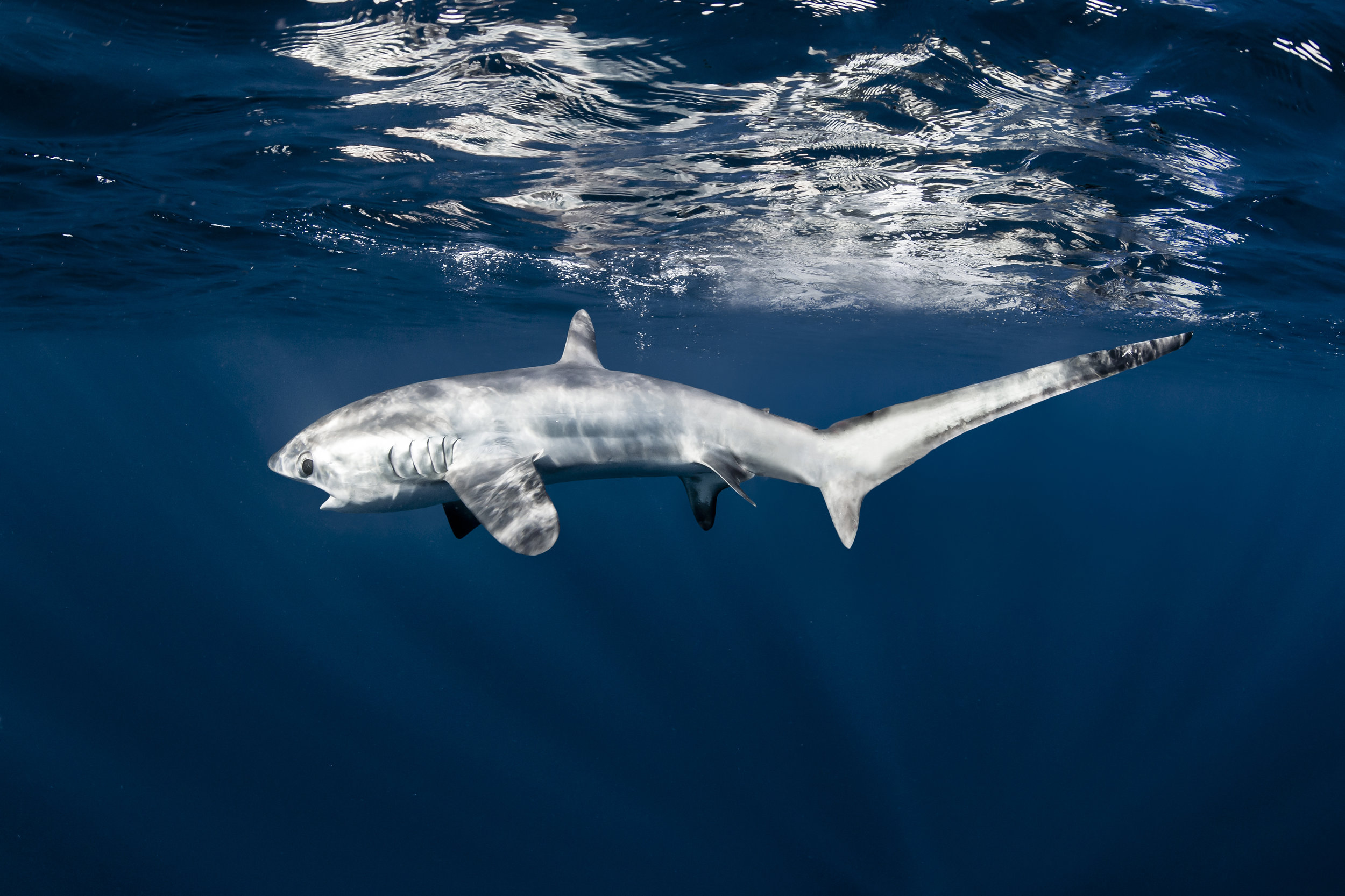The common thresher shark, Alopias vulpinus is an amazing ocean predator that all know of his long whip-like tail nearly as long as half the body itself. Its long caudal fin serves as a formidable weapon that allows the shark to immobilize and kill prey with one fast, heavy blow.
A Masterful Hunter
The common thresher is an efficient predator and has adapted well to their oceanic environment. A highly streamlined body and powerful muscles allow it to swim exceptionally fast, while a well-developed olfactory system is widely regarded as the most sensitive among bony fish (Teleostei).
Its super-efficient hunting strategy is just as graceful and gory. Its long tail is used in herding schools of fish, creating disorder and pandemonium. When its prey is rounded up and unable to get away, the shark strikes all at once with lightning speed using their tail that generate a force strong enough scout out or even kill multiple fish simultaneously. Tail-slapping is considered a very efficient fishing tactic and it has been the proliferation of thrushes that led to its reputation as amongst the most formidable predators.
A Migratory Lifestyle
These highly migratory species have been known to travel great distances across oceanic water. While many species are known from every major ocean, none occurs in the Baltic Sea or certain semiarid areas. The sharks journey thousands of miles over open ocean during the migrations.
Conservation Challenges
Overfishing, bycatch and habitat destruction are all major threats to these impressive animals despite their sheer size and strength. They have high value in the shark fin trade, and their elongated fins make them easy targets for directed fishing efforts. They are further threatened by the impacts of pollution and climate change.
Conservation Efforts
THERE ARE A NUMBER OF CONSERVATION MEASURES TO PROTECT SHARKS LIKE THE COMMON THRESHER:
Reclaim the Sea – Sustainable fishing methods (selective fish gear reductions, less and no-go zones at sea to reduce bycatch and protect marine habitats.
Marine Protected Areas – Establishing marine protected areas to protect critical habitats and reduce human impact on regions in the ocean.
Cooperation at the International Level: Enforcement of international agreements and regulations in order to combat IUU fishing.
Public Awareness: A provision for raising public awareness to the matter on marine conservation and threats affiliated with sharks as well as other marine species.
Working together to maintain a viable population of the common thresher will take practice, understanding etc. of how it contributes in all aspects…if taken away, what challenges and changes would these ecosystems face as time goes on? We can all make a difference and save this incredible animal, let´s fish responsibly, promote its habitat conservation and create more public awareness.
